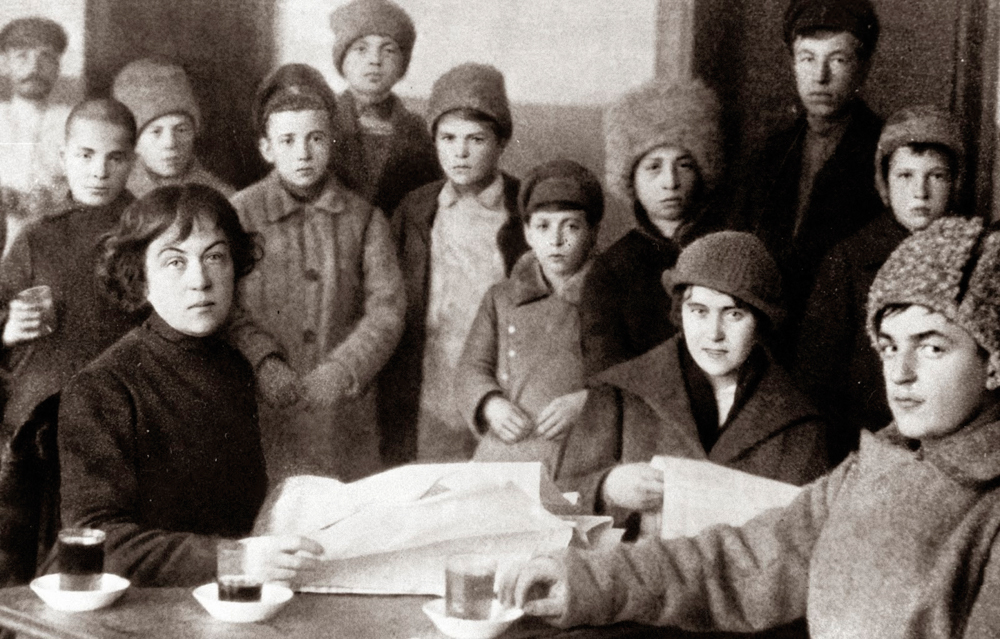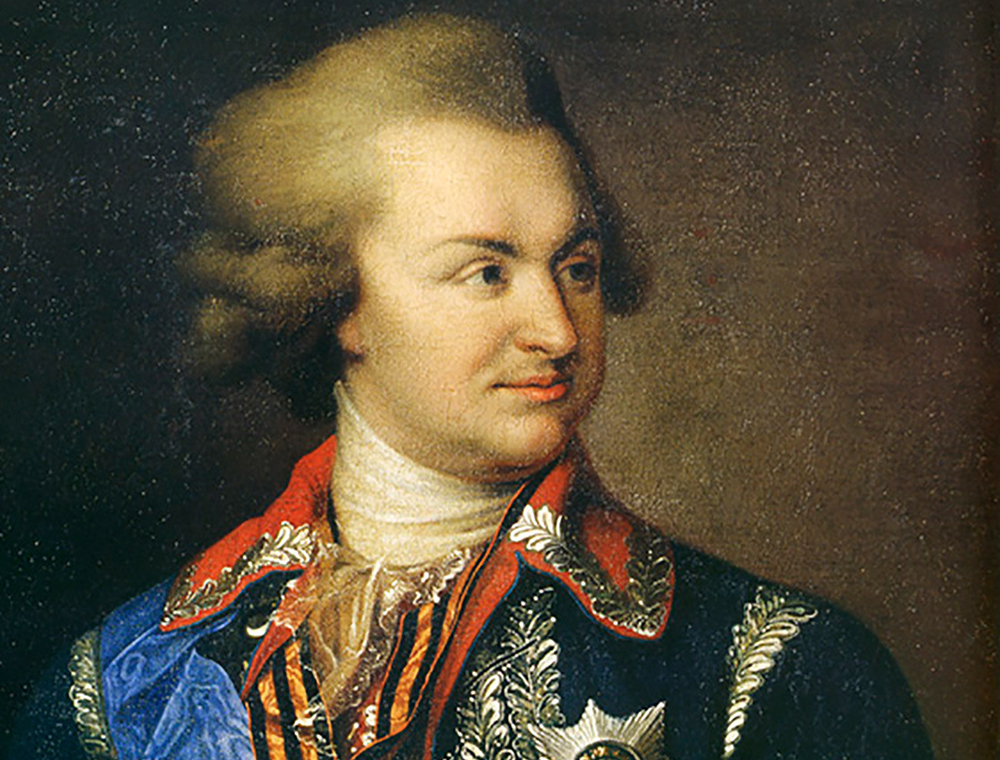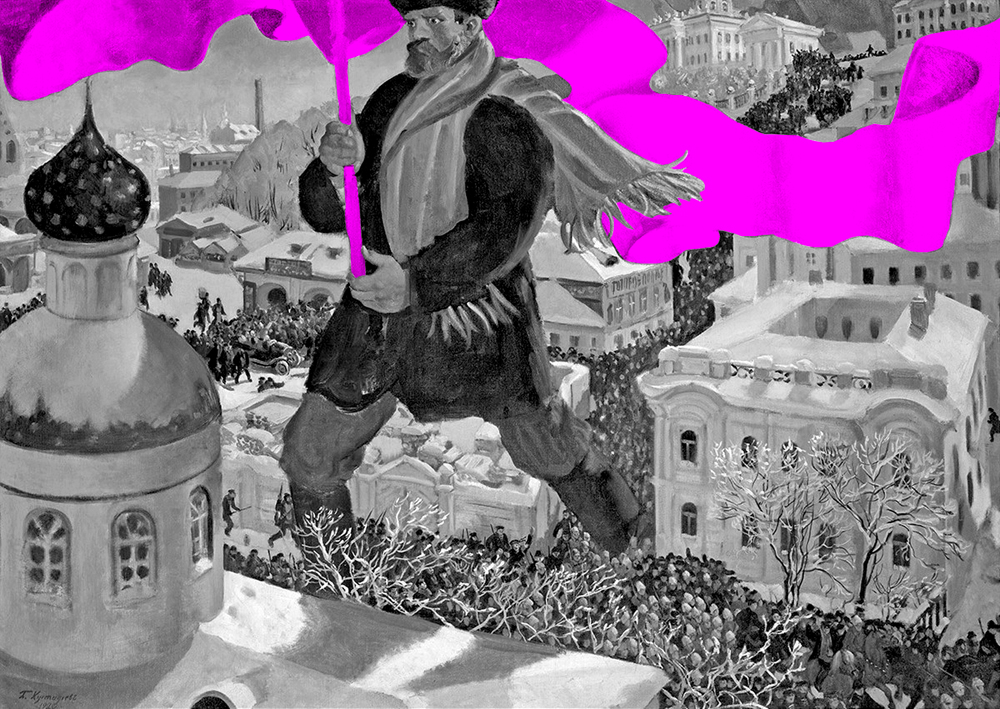The Russian Revolution started with International Women's Day
- In the shops and warehouses on the streets of Petrograd, thousands of women were joined daily in inexhaustible rows of groceries, which were gripped by the discomfort caused by famine and war. On the eve of International Women's Day of 1917, you could guess something big, but no one gave it importance. Those women ignited the torch of the explosion of the Russian Revolution.

International Women's Day
German activist Clara Zetkin presented a motion to commemorate International Women’s Day at the Second International Conference of Socialist Women held seven years earlier in Copenhagen. Emphasis was placed on the need to take steps to boost the fight for women's right to vote, to recognize the internationalist nature of women's suffrage and to discuss it from a socialist perspective. In order to raise his interest in these problems, he proposed organizing demonstrations and activities. In his writings and speeches, he will claim that socialism itself is a feminist and that it is an essential tool for achieving equality.


In the case of Russia, the Social Democratic Workers’ Party first celebrated the day in 1913 and chose to do so on 23 February according to the Julian calendar established in Russia, in the Gregorian calendar on 8 March. As in previous years, everyone thought that International Women’s Day was going to be centered on assemblies, conferences and manifestos, but that of 1917 was not like the previous ones.
Hunger and precariousness took hold of the streets of Petrograd (now St. Petersburg) as a result of the First World War. By forcing men to take the lead, the number of working women multiplied, working conditions deteriorated and inflation resulted in tremendous food increase. Textile factory workers were the first to start organizing in the face of this unsustainable situation; they chose International Women’s Day to make the first call for a strike.
Bread and peace
No organization joined the call for strike. In the book History of the Russian Revolution (1932), written by Leon Troski, it is mentioned that even the most combative Bolshevik group, the committee of the working-class district of Viborg, was in favour of not making a strike. It was not the right time. The following day, however, disobeying the Committee ' s decision, thousands of women from different textile factories went on strike and invited the workers to participate in the mobilizations.
They demanded bread, peace and expulsion from the Zar. The Cossacks who guarded the Duma (the Tsarist parliament that was set up after the protests of the peasants of 1905), known as the most repressive armed forces, were told to look at them head-on: “We have our husbands, our parents and our brothers in front of us. And we are just hungry, huge workloads, attacks, under-pricing and abuse. You also have mothers, women, sisters and daughters. We ask for the bread and the end of war.”
The first day was quiet and the authorities did not attach much importance to the protest. But the next morning, the workers of the large metallurgical companies joined the strike along with the committees of other neighborhoods and factories. No one could imagine that International Women’s Day was the first day of the Russian Revolution. Nor was it a milestone for the socialist committees of the other countries to definitely consolidate International Women’s Day.
Demonstration for the right to vote of women in Petrograd
In the following days, events took place. The revolutionary mass took to the streets for five days and achieved the disarmament of the Tsarist officers, the occupation of public institutions and the liberation of political prisoners, among other objectives. Forced to abdicate the Zar, the former regime was replaced by an interim government. In October 1917, the Bolsheviks (faction of the Social Democratic Workers’ Party of Russia, led by Lenin) took power.
Unprecedented rights holders
The revolution immediately assumed the idea that major social and political transformations should be linked to the emancipation of women. The committees of the new government included a large number of comrades who have worked for women’s rights for years, including:

Her work and the contribution of thousands of working women who were organizing themselves day by day influenced the drafting of the Civil Code of 1918. From the present point of view, some of the rights they got seem incredible. The right to abortion, free and free; the right to divorce, which would be channelled if there were only one partner; measures to equate the rights of married and unmarried; the prohibition of the father's mandatory surname; the creation of community childcare and care services; the debate on the possibilities of love and free union; the progressive reflection on homosexuality and gender identities; and above all, the organization of networks and working groups.
Cinzya Arruza in her book “Las sin parte: marriages and divorces between feminism and Marxism” (2015) states that, despite the difficulties caused by civil war and the drowning of economic structures, conservative resistance and other obstacles, there has been no historical event similar to that which women attained at that time and place. Subjects of full right, with all the possibilities to participate in public and social life, Russian women had the opportunity to build a new social and political order. Without denying the contradictions of the actions of the Bolsheviks, in Revolutionary Russia, at least until the end of the 1920s, unprecedented opportunities for freedom were achieved. It was decided to articulate and make more visible the links between the emancipation of women and self-organization and the labor movement. But Stalinism would soon come and with it the policy of the communist parties of the Third International, already bureaucratic, that would wipe out all these ties.
The paradox of books
How many times has this image been used to convene the mobilizations on 8 March… no? The face of Russian writer Lilya Brik is known to us thanks to this Soviet propaganda poster. Created for the state printing press of Leningrad (Petrograd was called after the revolution), written in Cyrillic, the book of all branches of knowledge shouts words in black and white photography, in this constructivist poster designed by Aleksandr Ródchenko in 1924.

In the first years after the revolution, the authorities wanted to promote population literacy, and one of the first steps was to translate the universal literature into Russian and publish it in a pocket format. Under the direction of writer Maksim Gorki, the company began to translate all the “masterpieces” of the world. However, in the early years of the revolution, citizens had to deal with the hardest and reddest winters of the years. Many of these books are said to have been burned to the heat of houses. Among these contexts, contradictions and paradoxes, the Russian Revolution began.
Events in Oñati
Of these and other things, we will be speaking at the days organized in Oñati between 5 and 19 November on the occasion of the centenary of the Russian Revolution. Here's the news posted in ARGIA, a humorous short film (don't miss it!) Programme.
And here, Ahoz Aho’s signature on this issue (from 53.40 minutes).
Wu Ming literatur kolektiboaren Proletkult (2018) “objektu narratibo” berriak sozialismoa eta zientzia fikzioa lotzen ditu, Sobiet Batasuneko zientzia fikzio klasikoaren aitzindari izan zen Izar gorria (1908) nobela eta haren egile Aleksandr Bogdanov boltxebikearen... [+]
Sobietar Batasuna, 1920ko azaroaren 18a. Sobieten Gobernu Zentralak abortua legeztatzeko dekretua onartu zuen, historian lehenengoz. Handik aurrera, librea izateaz gain, doakoa ere izango zen. Urte batzuetan behintzat.
Moskuko Plaza Gorriaren izena nondik datorren pentsatzean bi aukera bururatu ohi zaizkigu...
Krimeako konkista zuzendu zuen militarrak, Ukrainako gobernadore Grigori Potemkinek (1739-1791) Katalina II.a erreginari aurkeztu zizkion herri idilikoak faltsuak omen ziren. Hortik dator “Potemkin herria” esamoldea.
Ukraniako Sobietar Errepublika izendatu zenean, emakume bat jarri zen hango Barne ministro, eta praktikan gobernuburu ere izan zen, ofizialki ez baitzen halako kargurik. 1917ko abenduaren 27a zen, eta kasik oharkabean emakumeen emantzipaziorako borrokan itu bat jarri zuen... [+]
Kontsigna hau gakoa izan zen 1917ko hilabete zurrunbilotsu horietan. Nicolas II.a tsarrak abdikatu ostean 1917ko martxoan (momentu horretan Errusian zegoen juliotar egutegian otsaila zen) sortutako behin-behineko gobernuan sozialdemokratak parte hartzen ari ziren, liberal eta... [+]
Errusiako iraultzak azaroan 100 urte beteko dituela baliatuz, Oñatin jardunaldiak prestatu dituzte azaroaren 5etik aurrera. “XX. mendeko gertakari garrantzitsuenetariko bati buruz gehiago ikastea eta gizarte ereduaz eztabadaidatzea” dira helburu nagusiak.
















